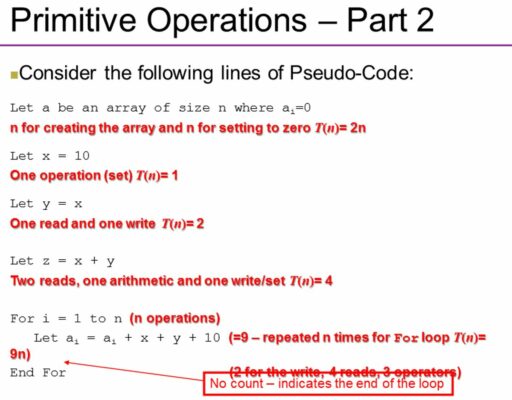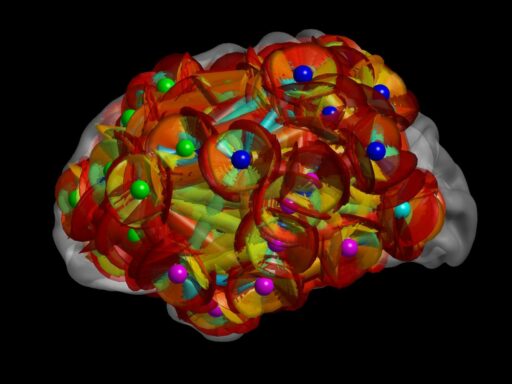Table of Contents
Primitive data types serve as the foundational elements of programming languages, offering a simple yet powerful means of data storage and manipulation. They are indispensable in the creation of complex data structures and algorithms. This article delves into the intricacies of primitive data types, exploring their definitions, characteristics, and the role they play in the Java programming language, as well as in programming at large. By understanding these basic building blocks, developers can write more efficient and effective code.
Key Takeaways
- Primitive data types are the simplest forms of data representation in programming languages, such as integers, floating-point numbers, characters, and boolean values.
- In Java, primitive types are predefined by the language and are optimized for performance due to their implementation at the hardware level or as built-in language constructs.
- Primitive and non-primitive data types differ significantly, with primitives being immutable and lacking methods, while non-primitives can represent more complex structures like arrays and objects.
- Understanding the syntax and semantics of primitive data types is crucial as they dictate how these types are defined and used within a programming language.
- The evolution of data types reflects the ongoing development of programming languages, with modern languages expanding upon primitive types to offer more flexibility and expressiveness.
The Fundamentals of Primitive Data Types


Definition and Role in Programming
In the realm of computer science, primitive data types are the foundational elements from which all other data types are derived. They serve as the simplest form of data representation in a programming language, providing the basic building blocks for constructing more complex data structures and algorithms.
Primitive data types are integral to the abstraction mechanisms within programming languages. They allow programmers to define data and the operations that can be performed on it, facilitating the representation of computational concepts. This abstraction is crucial for creating programs that are both efficient and understandable.
The effective use of primitive data types is essential in programming, as they are the means by which programmers can manipulate the core elements of their code.
Understanding and utilizing these data types is a fundamental skill for programmers, as they are the tools that enable the translation of human logic into machine-executable instructions.
Common Primitive Data Types in Java
Java, as a strongly typed language, defines a set of primitive data types that serve as the basic building blocks for data manipulation. These types are optimized for speed and efficiency, providing a fast means to store and process fundamental data values.
The eight primitives defined in Java are:
intfor 32-bit integer valuesbytefor 8-bit signed integersshortfor 16-bit signed integerslongfor 64-bit integer valuesfloatfor 32-bit floating-point numbersdoublefor 64-bit floating-point numbersbooleanfor true/false valuescharfor single 16-bit Unicode characters
Each primitive type has a specific purpose and a fixed size, which dictates its range of possible values and the operations it can perform. For instance, int is commonly used for integer arithmetic, while float and double are suited for calculations requiring decimal precision.
Understanding these data types is essential for efficient programming, as they directly influence how information is stored and retrieved from memory. While they lack the object-oriented features of non-primitive types, their simplicity is key in scenarios where performance is critical.
Characteristics and Limitations
Primitive data types are the simplest form of data representation in programming languages, offering a foundation for building more complex structures. They are fixed in size and typically have a direct correspondence with underlying hardware operations, which makes them fast and efficient for basic computational tasks.
However, these types come with inherent limitations. For instance, they cannot represent complex data or handle operations beyond their defined scope. Here’s a brief overview of their characteristics:
- Fixed size and limited precision
- Direct mapping to hardware, ensuring speed
- Inability to represent complex objects or structures
- No built-in methods for advanced operations
Primitive types are essential for performance-critical applications, but their simplicity can be a constraint when dealing with more sophisticated data needs.
While primitive types are indispensable for basic data operations, they may fall short in scenarios requiring advanced functionalities or complex data structures. This is where non-primitive types, with their ability to encapsulate behaviors and state, become valuable despite their additional overhead.
Comparing Primitive and Non-Primitive Data Types


Key Differences and Similarities
Understanding the distinctions and commonalities between primitive and non-primitive data types is crucial for effective programming. Primitive types are stored directly in memory and are immutable, meaning their values cannot be altered once set; any modification results in a new copy. In contrast, non-primitive types are mutable and stored as references, pointing to the location where the actual data resides.
The choice between primitive and non-primitive types can significantly impact both performance and memory usage in an application.
Here’s a concise comparison:
- Comparison: Primitive types are compared by value, while non-primitive types are compared by reference.
- Size: Primitives have a fixed size, whereas non-primitives can vary depending on their content.
- Memory: Primitives hold the actual value in memory, while non-primitives store a reference to the data.
- Mutability: Primitives are immutable, as opposed to the mutability of non-primitives.
When considering which data type to use, it’s important to weigh these differences against the requirements of your program. Performance-sensitive applications may benefit from the speed of primitives, while those requiring complex data structures might necessitate the flexibility of non-primitives.
Performance and Memory Considerations
When it comes to performance and memory usage, primitive data types generally offer significant advantages in speed and memory compared to non-primitive data types. However, it’s essential to remember that choosing the right data type involves a balance between performance and memory usage. While primitive types offer these advantages, their capabilities and range may be limited compared to non-primitive types like String. Therefore, selecting the appropriate data type requires careful consideration of both performance requirements and memory constraints.
In performance-critical scenarios, the choice of data type can be more impactful than micromanaging primitive vs. non-primitive usage for performance optimization. However, evaluating the data types might be necessary in specific cases.
Additional considerations include understanding the trade-offs between ease of use and performance. For instance, while JSON’s ease of use is undeniable, optimizing JSON usage involves understanding factors like data size, parsing costs, and potential alternatives like binary formats for specific use cases.
During compilation, values of primitive types are stored directly in memory, which allows for fast access and manipulation. In contrast, references to objects involve more intricate memory operations due to the added overhead of allocation and management. This distinction is crucial for developers to understand when optimizing their code for performance.
Appropriate Usage Scenarios
Understanding when to use primitive and non-primitive data types is crucial for efficient programming. Use primitives for fundamental data and simple operations, as they are lightweight and fast. For instance, integers and booleans are often used for counters, flags, and simple calculations. On the other hand, non-primitive types are better suited for complex data structures and object-oriented features. They are indispensable when dealing with collections, encapsulating logic, or when a higher level of abstraction is required.
In Java, primitives are the go-to choice for performance-critical sections of code. They avoid the overhead of object creation and can be easily manipulated without the need for method calls.
Here are some scenarios where non-primitive data types excel:
- Processing large geospatial data sets in real-time for traffic analysis or weather forecasting.
- Analyzing log files as they are generated to detect anomalies or security threats.
- Mapping JSON data from an API response to a custom object in your application.
- Implementing single sign-on (SSO) across multiple applications using JSON Web Tokens (JWT).
It’s important to balance the use of primitives and non-primitives based on the specific needs of the application, considering factors such as performance, memory usage, and code maintainability.
Syntactic Elements of Primitive Data Types


Understanding Syntax in Programming Languages
Syntax in programming languages is the set of rules that defines the combinations of symbols that can be used to create valid programs. It is the blueprint that guides programmers in writing code that the computer can interpret. Syntax varies widely between languages, but its fundamental purpose remains the same: to provide a clear structure for the expression of computational logic.
In essence, syntax is to programming what grammar is to language; it is the foundation upon which the meaning of code is built. While most programming languages are textual, using sequences of text such as words, numbers, and punctuation, others may employ a more graphical approach, utilizing visual symbols and spatial relationships to convey instructions.
The precise definition of a language’s syntax is often provided by a formal language specification, which includes a combination of regular expressions for lexical structure and Backus-Naur form for grammatical structure.
For example, a simple grammar based on Lisp could be defined as follows:
expression::=atom|listatom::=number|symbolnumber::= [+-]?[‘0’-‘9’]+symbol::= [‘A’-‘Z”a’-‘z’].*list::= ‘(‘expression* ‘)’
This structure delineates the permissible constructs within the language and provides a framework for error checking, ensuring that only syntactically correct programs are executed.
The Role of Syntax in Data Type Definitions
The syntax of a programming language is crucial as it dictates the correct sequence and combination of symbols that can be used to form a valid program. Syntax is the blueprint that guides programmers in writing code that the machine can interpret correctly. For primitive data types, syntax determines how variables are declared and how data values are assigned to these variables.
In the context of primitive data types, syntax rules ensure that data is stored efficiently and that operations on these types are performed correctly. For example, in Java, the syntax for declaring an integer is int number = 0;, where int specifies the data type, number is the variable name, and 0 is the initial value assigned to the variable.
The precision and clarity of syntax rules are what allow developers to utilize the full potential of a programming language’s type system.
Understanding and adhering to the syntax rules associated with primitive data types is essential for error-free coding. Mistakes in syntax can lead to compilation errors or unintended behavior during program execution. Therefore, familiarizing oneself with the syntactic structures of primitives is a foundational skill for any programmer.
Examples of Syntactic Structures for Primitives
In programming languages, the syntax for defining primitive data types is typically straightforward and consistent. For example, in Java, an integer is declared with the int keyword followed by a variable name: int number;. Similarly, a boolean value is declared with boolean followed by a variable name: boolean isTrue;.
The simplicity of these syntactic structures is essential, as it allows programmers to define and manipulate basic data types with minimal effort. Below is a table illustrating the syntax for declaring various primitive data types in Java:
| Data Type | Syntax Example |
|---|---|
| Integer | int num; |
| Boolean | boolean flag; |
| Character | char letter; |
| Float | float value; |
Primitive data types serve as the foundation for more complex structures and operations within a program. Their efficient implementation is often directly supported by the underlying hardware, which is why they are optimized for performance.
Understanding the syntax for primitives is the first step towards mastering a programming language. It’s the grammar that defines how we write instructions for the computer, much like how we use grammar to construct sentences in human languages.
Implementing Primitive Data Types in Code
Writing Code with Primitive Data Types
When programming in Java, using primitive data types is essential for handling basic data operations efficiently. Each primitive type serves a specific purpose and has a fixed size, which allows for quick access and manipulation of data directly in memory. Here’s a quick reference for declaring primitives in Java:
byte byteVariable = 30;// For very small integersshort shortVariable = 10000;// For small integersint integerVariable = 1;// The default choice for integerslong longVariable = 12L;// For large integers (note the ‘L’ suffix)float floatVariable = 25f;// For floating-point numbers (note the ‘f’ suffix)double doubleVariable = 15.0;// For double precision numberschar charVariable = 'A';// For charactersboolean booleanVariable = true;// For true/false values
While primitive data types are limited in functionality and cannot be inherited, they are indispensable for their simplicity and performance. They are the preferred choice when memory efficiency and speed are paramount, such as in high-performance computing scenarios or when working with large arrays of data.
Remember that primitives are immutable and do not have methods associated with them. This makes them less flexible than objects but also means there is less overhead, which is crucial in resource-constrained environments.
Best Practices for Efficient Use
When working with primitive data types, it’s essential to adopt practices that enhance performance and maintainability. Always prioritize transmitting compressed JSON for optimal performance, particularly in web browsers where GZIP compression can significantly reduce data size by up to 70-80%. This is because JSON often includes redundant field information that can be minimized.
For mobile applications or performance-critical scenarios, consider using a binary format like Protocol Buffers. This can lead to faster data transmission and reduced parsing time. Additionally, optimizing JSON data size by removing unnecessary whitespace, formatting, and using shorter field names can have a substantial impact.
In specific performance-critical scenarios, evaluating the data types and their usage can be more impactful than micromanaging primitive vs. non-primitive usage for performance optimization.
Remember, the choice of data type should be context-driven, taking into account the trade-offs between efficiency and functionality. This understanding is crucial for making informed decisions, especially in Spring Boot projects where performance can be a key concern.
Common Pitfalls and How to Avoid Them
When working with primitive data types, developers often encounter a range of common pitfalls that can lead to bugs and inefficient code. Understanding these pitfalls is crucial for writing robust and performant applications.
- Type Conversion Errors: Implicit and explicit type conversions can result in unexpected behavior or data loss. Always verify the resulting data type when performing conversions.
- Overflow and Underflow: Numeric data types have limits. Exceeding these limits causes overflow or underflow. Use appropriate data types for the expected range of values.
- Division by Zero: This can crash a program. Always check that the denominator is not zero before performing division.
By being mindful of these issues and incorporating checks and balances in your code, you can significantly reduce the occurrence of errors related to primitive data types.
Additional considerations include the tradeoff between error handling capabilities and performance. For instance, while array index errors are common, languages like C opt not to check them for performance reasons. It’s important to balance the need for error checking with the desire for efficient code execution.
The Evolution of Data Types in Programming


Historical Perspective on Primitive Types
The inception of primitive data types can be traced back to the early days of programming, where the need for efficient computation was paramount. Primitive types were designed to be simple and fast, directly corresponding to the hardware’s capabilities. Over time, as programming languages evolved, so did the variety of primitive types available.
Primitive data types have always been accessed by value, meaning that operations on these types manipulate the actual data rather than references to the data. This is in contrast to more complex data structures, which may involve pointers or references.
The simplicity of primitive data types has been a double-edged sword. While they offer speed and direct access to memory, their simplicity also imposes limitations on the complexity of data they can represent.
As programming paradigms shifted and the demand for more expressive data representations grew, the distinction between primitive and abstract data structures became more pronounced. The table below illustrates some of the trade-offs between these two types of data structures:
| Data Structure Type | Simplicity | Efficiency | Flexibility |
|---|---|---|---|
| Primitive | High | High | Low |
| Abstract | Low | Variable | High |
How Modern Languages Have Expanded on Primitives
Modern programming languages have significantly evolved from their predecessors, which were closely tied to the hardware’s capabilities. They now offer a higher level of abstraction, allowing developers to express complex ideas without delving into the intricacies of the computer’s architecture. This shift has led to the creation of more expressive and flexible primitive data types.
The expansion of primitive data types in modern languages reflects a broader trend towards more powerful and abstract programming constructs.
For instance, languages like Python and JavaScript have introduced data types that handle complex numbers and arbitrary-precision arithmetic, which were not typically available as primitive types in older languages. Below is a list of some modern primitive data types and their corresponding languages:
- Python:
complexfor complex numbers - JavaScript:
BigIntfor arbitrary-precision integers - Rust:
i128andu128for 128-bit integers
These advancements have not only enriched the set of tools available to programmers but also streamlined certain computational tasks that previously required more cumbersome workarounds.
The Future of Data Types in Programming
As programming languages evolve, the distinction between primitive and non-primitive data types is becoming more nuanced. The future of data types in programming is likely to be influenced by the growing demands for more complex data handling and the need for higher performance in applications.
- The integration of static and dynamic typing in new languages.
- Enhanced performance optimization techniques beyond the primitive vs. non-primitive debate.
- The emergence of languages that challenge traditional data type paradigms.
The evolution of data types is not just about new types being introduced, but also about the refinement of existing types to better meet the needs of modern software development.
In the context of performance, while it is often more impactful to focus on overall system design, there are scenarios where the choice of data type is critical. The table below illustrates some of the recent programming languages and their typing approaches, reflecting the diversity and innovation in the field.
Conclusion
Throughout this article, we have explored the fundamental nature of primitive data types, the essential building blocks of programming languages. From integers and floating-point numbers to characters and boolean values, these simple yet powerful elements form the core of data representation and manipulation in software development. Understanding primitive data types is crucial for programmers, as they serve as the foundation upon which more complex structures are built. They offer a blend of efficiency and direct memory access, making them indispensable for performance-critical applications. However, their simplicity also comes with limitations, necessitating the use of more sophisticated, non-primitive data types for advanced functionalities. As we continue to delve into the intricacies of programming, let us appreciate the elegance and utility of these basic constructs that, despite their constraints, continue to underpin the vast and evolving landscape of computer programming.
Frequently Asked Questions
What are primitive data types?
Primitive data types are the most basic data types provided by a programming language. They are the building blocks for more complex data structures and represent simple values such as integers, floating-point numbers, characters, and boolean values.
How do primitive data types differ from non-primitive data types in Java?
Primitive data types in Java are predefined by the language and represent basic values like numbers and characters. They are not objects and don’t have associated methods. Non-primitive data types, such as arrays and objects, are more complex and can store multiple values or structures.
Why are primitive data types important in programming?
Primitive data types are important because they provide a way to store and manipulate simple values efficiently. They are typically implemented directly in hardware or as built-in types in programming languages, optimized for performance.
What are some common examples of primitive data types?
Common examples of primitive data types include integers, which represent whole numbers; floating-point numbers, which represent real numbers with integer and fractional parts; characters, which represent individual symbols; and boolean values, which represent true or false.
Can you explain the syntax of primitive data types in programming?
The syntax of primitive data types in programming involves predefined rules that describe their structure and meaning. For example, in Java, declaring an integer variable involves specifying the type followed by the variable name, like ‘int number;’.
What are the limitations of primitive data types?
Primitive data types have fixed sizes and limited functionality. They lack inheritance capabilities and are not ideal for complex data structures or advanced functionalities, which are better handled by non-primitive data types or custom-defined abstract data structures.





